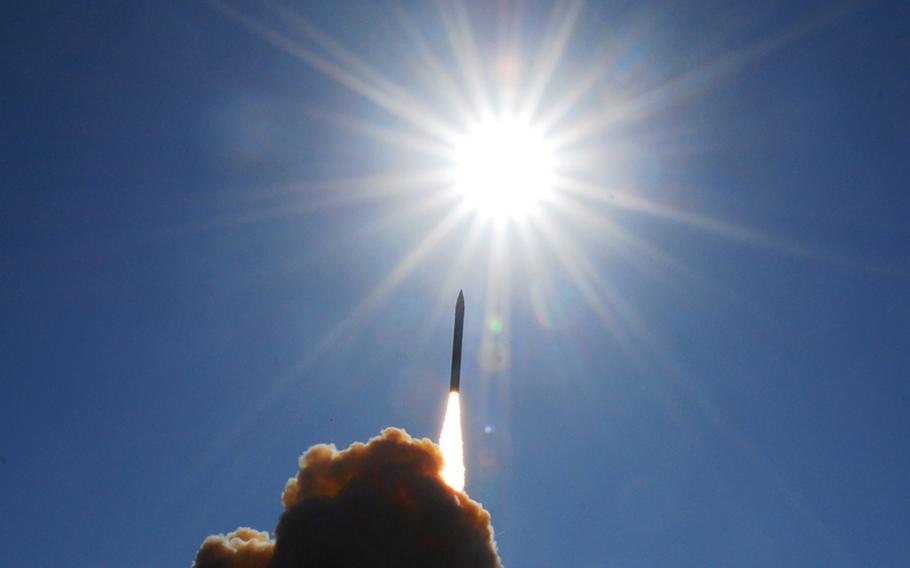
A ground-based interceptor missile lifts off from Vandenberg Air Force Base in 2008. (Joe Davila/U.S. Navy)
STUTTGART, Germany — Without better management and oversight, the Defense Department’s missile defense plans in Europe face potential cost overruns and increased uncertainty about the system’s capacity to effectively counter missile threats from the Middle East, according to a Government Accountability Office report released Wednesday.
“DOD has initiated multiple simultaneous efforts to implement [the European Phased Adaptive Approach missile defense plan], but faces three key management challenges—the lack of clear guidance, life-cycle costs and a fully integrated schedule,” the GAO reported.
In 2009, the Obama administration scrapped the missile defense plan favored under the Bush administration that called for a fixed radar site in the Czech Republic and ground-based interceptors in Poland. The European Phased Adaptive Approach was adopted as a more flexible and affordable alternative, relying on a combination of land- and sea-based interceptors to be built in four phases.
However, the Pentagon has not yet established the actual life-cycle costs of the phased approach, which represents DOD’s first implementation of a new, regional approach to ballistic missile defense.
Uncertainty about when the system will become operational also remains a concern, the GAO stated.
“It really comes down to those folks that will be operating the systems needing to understand what the plan is,” John Pendleton, director of the GAO’s defense capabilities and management division, said in a podcast discussion about the findings. “What we heard, because we went around and talked and got information from folks all around the world, is we need information about how the system will perform under more operationally realistic conditions.”
According to the GAO, the Defense Department’s “aggressive” development schedule runs the risk of deploying assets without enough trained personnel to carry out the mission and could lead to issues with operational performance.
Going forward, the GAO recommends that the DOD:
-- Establish a time line for when various phases of the project will be completed.
-- Develop cost estimates to determine its long-term affordability.
-- Establish a more integrated development schedule that takes into account acquisition, infrastructure and personnel requirements.
-- Direct U.S. Strategic Command, in coordination with the Missile Defense Agency, to adopt a system for measuring the durability and effectiveness of the system.
In a written response, the Defense Department said it agreed with most of the findings and that steps were being taken to better measure future costs and performance.